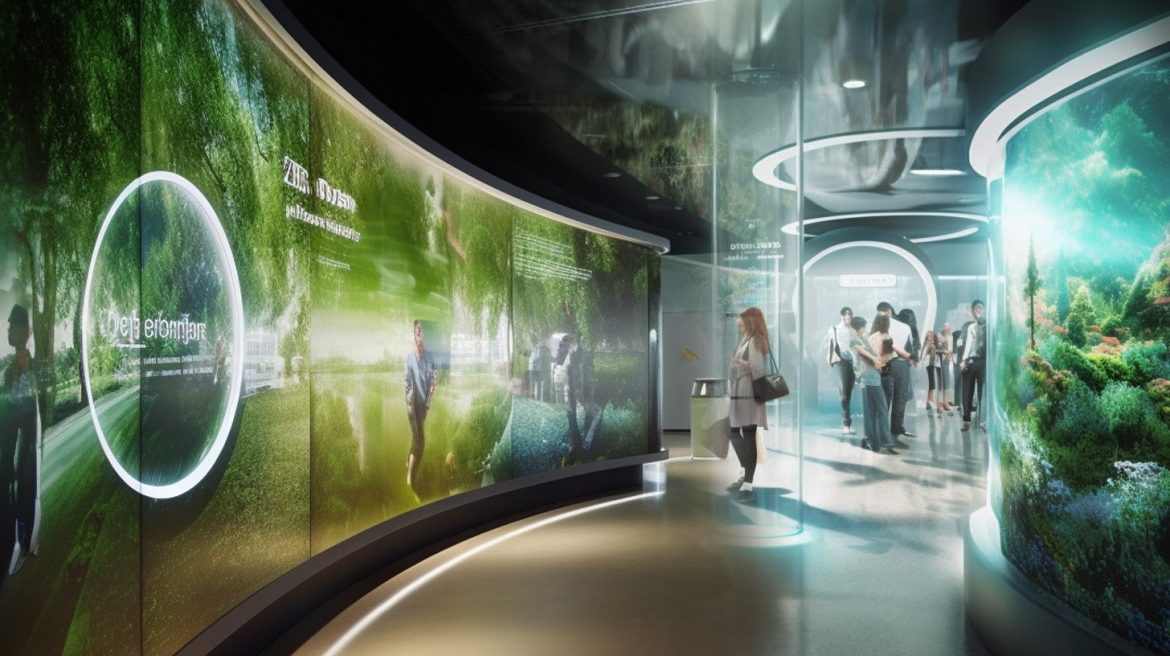Let’s be honest. When you think about a conference, you probably picture coffee stations, swag bags, and a sea of people. You don’t often picture the invisible cloud of carbon emissions trailing every attendee who flew or drove in. It’s a silent, hefty price tag on our collective environment.
But here’s the exciting shift. The massive move to virtual and hybrid events isn’t just a matter of convenience—it’s a golden, once-in-a-generation opportunity. An opportunity to rebuild how we connect from the ground up, with sustainability woven right into the blueprint. We can build networks that are both powerful and kind to the planet.
The Unseen Cost of “Business as Usual”
First, let’s get a feel for the scale. A single, large in-person international conference can generate the same carbon emissions as a small town does in a year. Seriously. The biggest culprit? Attendee travel. Flights are the undeniable heavyweight champion of event-related carbon emissions.
And it’s not just the travel. Think about the energy guzzled by a massive, air-conditioned convention center. The single-use plastics, the printed materials that get tossed by lunchtime, the food waste. The entire model, while valuable for face-to-face connection, is inherently resource-intensive.
The Green Advantage of Going Virtual
Okay, so virtual events are the clear winner for the planet, right? Well, yes… mostly. A virtual event can slash the carbon footprint of its in-person counterpart by over 90%. That’s a staggering figure. The emissions essentially shrink down to the energy used by servers and the devices of the attendees.
But—and this is a crucial ‘but’—they aren’t a perfect, zero-impact solution. The digital world has a physical cost. Data centers, which host the platforms we use, consume vast amounts of electricity. The key is to be intentional, not just assume that ‘virtual’ automatically equals ‘virtuous.’
Actionable Steps for a Leaner Virtual Event
So, how do you make your virtual event as green as it can be? It’s about smart choices.
- Choose a Green-Hosted Platform: Ask your event tech providers about their sustainability commitments. Do they use renewable energy to power their data centers? Are they committed to carbon offsetting? This is a question more vendors are prepared to answer.
- Optimize Video Quality: Not every moment of your event needs to be in crystal-clear 4K HD. Offering a standard-definition stream or making it an audio-only option for certain sessions can drastically reduce data transfer and energy use. It’s a small tweak with a big collective impact.
- Go Digital-Only (and Mean It): Ditch the physical swag mailed to every attendee. Instead, invest in high-quality digital resources, e-books, or donations to an environmental cause in the attendees’ names. The memory lasts longer than a branded stress ball.
The Hybrid Hurdle: The Best of Both Worlds, Responsibly
Hybrid is where it gets really interesting—and more complex. You’re managing two audiences, two sets of experiences, and two carbon footprints. The goal here isn’t to eliminate the in-person element, but to make it profoundly more efficient and thoughtful.
The biggest lever you can pull in a hybrid model is reducing the number of people who need to travel. By offering a compelling virtual track, you automatically cut the overall travel emissions. You’re giving people a legitimate, valuable choice.
Building a Sustainable Hybrid Event Strategy
Pulling off a truly sustainable hybrid event requires a bit of a mindset shift. You’re not just bolting a virtual component onto an old-school event. You’re designing a single, integrated experience with two delivery methods.
| Strategy | In-Person Action | Virtual Enhancement |
| Content Delivery | Prioritize local & regional speakers to cut down on flights. | Stream all keynotes and sessions live, with on-demand replay. |
| Networking | Create dedicated “hub” spaces for facilitated discussions. | Use AI-powered matchmaking in the virtual platform to connect attendees with shared interests. |
| Resource Management | Serve locally sourced, plant-forward catering. Eliminate single-use items. | Provide all materials digitally. Use a virtual “swag bag” with digital coupons and downloads. |
See the pattern? It’s about making the live event more localized and the digital experience so good that no one feels like a second-class citizen. This balance is the heart of sustainable hybrid event planning.
The Ripple Effect: Beyond the Event Itself
Sustainable networking doesn’t stop when the final session ends. The choices we make create ripples. By championing a green event, you’re sending a powerful message about your organization’s values. You’re educating your attendees, your partners, your speakers.
You know, this can even become a part of your event’s story. Share your sustainability goals and your progress. Be transparent. “Hey, by choosing to attend virtually, you helped us save an estimated X tons of CO2.” That’s a powerful stat that turns attendees into partners in your mission.
And let’s talk about the tech itself. The rapid innovation in virtual event platforms—spatial audio, virtual reality meeting spaces, better engagement tools—isn’t just about flash. It’s about making digital connection feel less like a compromise and more like a genuine, first-class alternative. This tech is the very engine of sustainable professional networking.
A New Connection Ethos
In the end, this isn’t just about carbon accounting or choosing the right streaming resolution. It’s about a shift in philosophy. It’s asking a new, more responsible question.
Instead of “How can we get the most people in a room?” we start asking, “How can we foster the most meaningful connections with the lightest touch on the planet?“
That question changes everything. It pushes us to be more creative, more intentional, and frankly, more human in how we bring people together. The future of networking isn’t just virtual or hybrid. It’s thoughtful.




